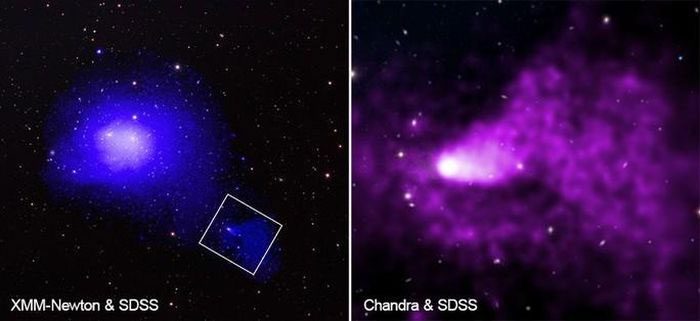The Chandra X-ray Observatory of NASA has captured a dazzling “tail” stretching 1.5 million light-years, revealing the “burp” of what is described as a “monstrous galaxy cluster.”

Dazzling image of the “monster” Coma observed by the European Space Agency’s XMM-Newton Telescope and NASA’s Chandra – (Image: ESA/NASA).
According to Space, the latest observations from Chandra and several other telescopes not only prove that the aforementioned 1.5 million light-year “tail” breaks all records but also reveal how a “monstrous” galaxy collection can grow—through astonishing gluttony.
The Coma Cluster, described by NASA as horrifyingly large, is located approximately 340 million light-years from Earth and is one of the largest galaxy clusters humanity has ever explored.
It contains at least 1,000 individual galaxies, steadily growing as another galaxy group, known as NGC 4839, is falling into it at a speed of about 4.8 million km/h, which is 4,000 times the speed of sound.
NGC 4839 is not small; it contains around 50 individual galaxies. However, it cannot resist the immense gravitational pull from the nearby Coma Cluster.
The Coma Cluster is beginning its feast by stripping away the gas envelope of NGC 4839 using its own abundant hot gas, creating a massive jet stream that is the fiery tail captured by NASA’s Chandra.
In the future, this long tail of fire will also be mixed into the vast gas reservoir of Coma and will cool down to the point of becoming invisible.




















































